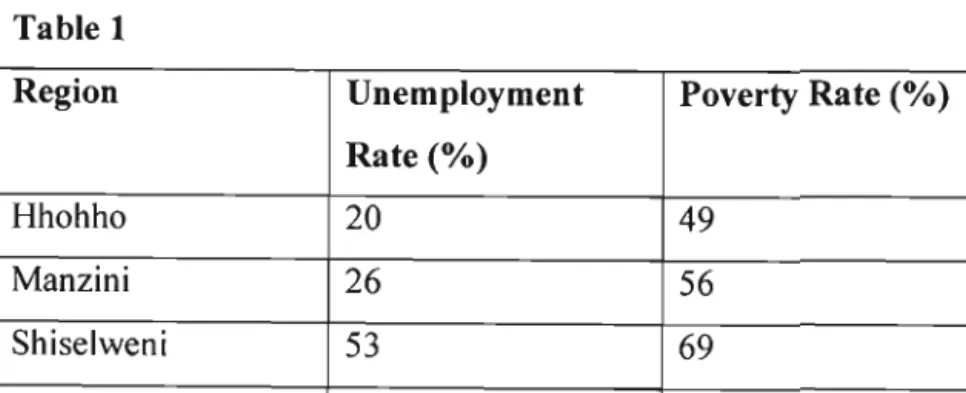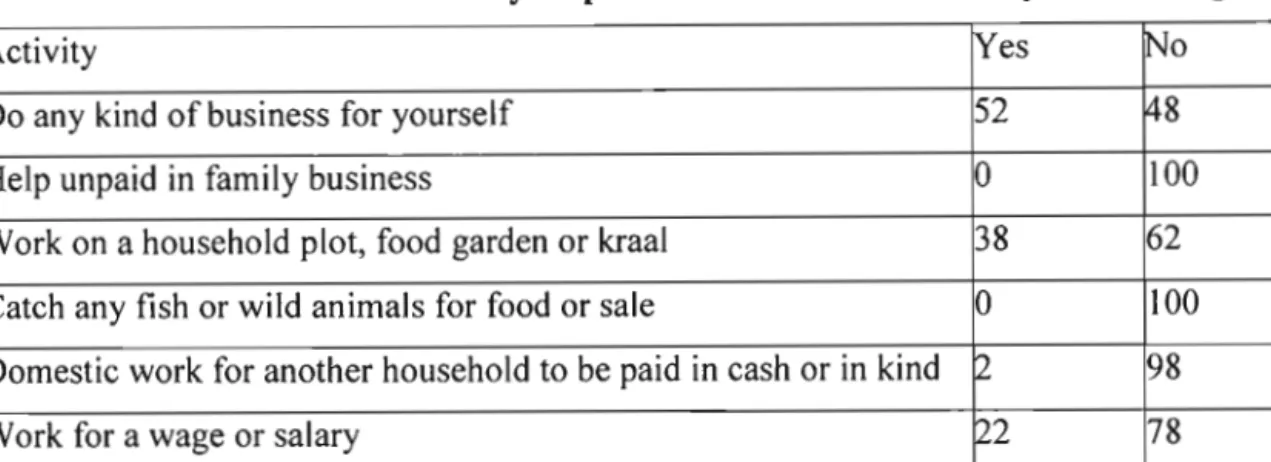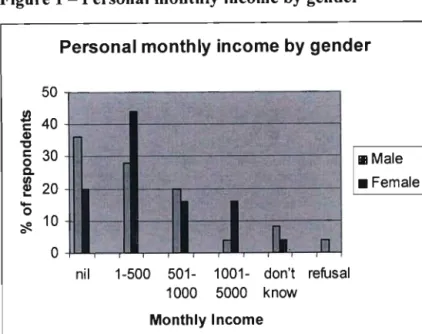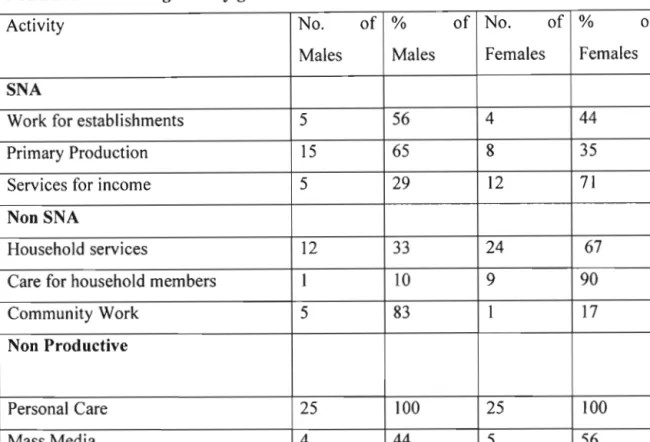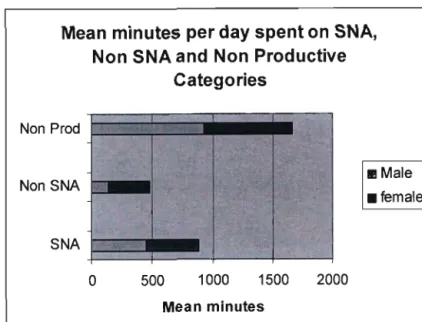The study aims to investigate the time use patterns of women and men in Matsanjeni, Swaziland, a rural community in the eastern part of the country. Therefore, the United Nations Development Program (2003: 3) notes that the unequal participation of women and men in the labor market reflects social and cultural constructs of gender.
Objective of the Study
34; to increase the visibility of women's work both at home and in the labor market" (United Nations Development Programme: 1996, cited in United Nations 2003: 20). Research on time use will also help inform policy by revealing everyday patterns in life. of women and men in the research community and how work is divided.
Problem Statement and Justification of the Research
Changes in the market and household economy, changes in roles and responsibilities, and political decisions have important implications for how women and men use time. The Time Use Survey will pinpoint the amount of time women and men in Matsanjena spend on paid and unpaid work and leisure activities, revealing gender differences in the amount of work women and men do, particularly in the household.
Research Questions
However, largely due to the lack of adequate data, there is limited empirical research examining how women combine these roles. A time use survey is a tool to promote gender equality by identifying underlying inequalities and redressing them through a gender analysis of the paid and unpaid economic activities of women and men to achieve better harmonization of family responsibilities.
Research Design
There is extensive literature on the unfair burden that women bear, especially in rural areas of the developing world, by combining their roles in production and reproduction (BPFA: 1995: 67). It will also contribute to the formulation of sectoral gender-sensitive policies for Swaziland, which has so far only managed to formulate general national gender policies.
Outline of the Dissertation
LITERATURE REVIEW
The Current System of National Accounts and the Conventional Economic Systems
Regardless of this criticism, the 1993 revision of the National Accounts System retained most of the features found in the 1968 National Accounts System with minor changes. The confusion is caused by the fact that while there is little difference in value added in food processing for market and cooking for own consumption, the former is in and the latter is outside the SNA.
Defining Unpaid Care Work
The term care does not mean that work is always done willingly, or with love. Whether the work is done willingly depends on the relationship between the caregiver and the recipient and possibly other people in the family or community.
Why Bother to Value Unpaid Care Work
In a strict sense, therefore, unpaid work is an economic good and it must be valued (Hirway: 2005a: 7). They therefore argue that the valuation of unpaid care work "would make such externalities visible in the national accounts." (Alexander & Baden, 2002: 10).
Underreporting of Unpaid Work into the Statistical Systems
Because gross domestic product includes only goods and services exchanged for money, unpaid work is invisible in our measures of progress, and most work done by women goes largely unvalued. Consequently, our understanding of the workings of the overall economic system is severely limited by this lack of data availability (Ironmonger: 1999: 3).
The Link between Low-Paid Work and Unpaid Care Work
In addition, because women's domestic responsibilities take up a large portion of their time, women have less time to develop their skills in the labor market than men. This breakdown in services goes against their status and promotion in the labor market.
The Importance of Time Use Surveys
Time use data provides detailed information about how individuals spend their time, on a daily or weekly basis. 34; Time-use data can provide a more complete and better measurement of all labor inputs, both within the household and in the market" (UNDP.
Problems Associated with Time Use Data
In addition, she notes that the lack of use of time-use data also comes because it addresses policy issues that are not in the mainstream of national policy debates. Second, she notes that time use data do not have the respect given to other forms of data due to non-standardized methods of collection.
Background and Definition of Time-Use Surveys
They observe that "currently there is a growing trend in which many developing countries are experimenting with time use data collection methods and conducting time use pilot studies" (Columbia University: 2004: 15). He further notes that time use data is usually generated from time use surveys by recording the activities and measuring the time individuals spend on them. There are various methods of collecting time usage data and the next section will look at some of them, their advantages and disadvantages.
Methods of Data Collection
- Self-Reporting Diary Method
- The Recall Interviewer Method
- Observation Method
However, the main advantage of the 'tomorrow' log is that it eliminates bias caused by recall error. In addition, they note that the increasing popularity of the recall interview method is reflected in large numbers. Another advantage of the recall interview method is that face-to-face interviews can be more effective than self-report diaries in gaining deeper insight into respondents' background information.
Purpose and Nature of the Activity Classification for Time Use UNDP (2003: 50) observes that the classification of activities can be used to describe
For example, a researcher can photograph a subject from a distance in a way that does not indicate that their behavior is being recorded. On the other hand, Columbia University notes that the main disadvantage of the observation method is that it is more labor-intensive and expensive than other methods because the researcher must physically travel to the subject's location and can observe only one household at a time. . The purpose and nature of the classification of time-consuming activitiesUNDP notes that the classification of activities can be used to describe.
A Country's Experience: India
- Major Results
- Lessons Learned
It is for this reason that Hirway (1999: 2) used the results of the Indian Time Use Survey and made an analysis focusing mainly on labor force estimates and time spent by men and women on extended SNA and non-SNA activities . However, rural women and men perform longer hours in SNA activities per week than their urban counterparts. Time use survey analysis contributes to improving labor force statistics.
Population and Sampling
Since the main objective of the study was to obtain some impressions of the gendered nature of time use from the sample, obtaining a representative sample was not an important requirement. Therefore, the results are not representative of the overall time use patterns of Matsanjeni residents. Male and female respondents were randomly selected and asked what activities they had performed between 4:00 a.m. the previous day and 4:00 a.m. the day of the interview.
Data Collection Method
The day started at 9:00 am with the researcher conducting a gender sensitization workshop for about two hours; which was followed by administration of time use diaries by the researcher and research assistants. Respondents were asked to provide basic information about the households in which they live, and prior to the administration of the diary, respondents were asked. It is required for the preparatory process that the researcher travels to and from Matsanjeni at least three times before the actual day of diary administration.
Data Analysis Procedures
Bittman underscores the importance of the questionnaire and argues that, "the content of this questionnaire is often as critical to the interpretation and analysis of time-use as the diary." A number of problems were experienced by the researcher in the field preparation process and in the field during the data collection process. That being the case, the organizers of the data collection workshop in Matsanjeni (developers of the European Union Macro project community) did not have access to the telephone.
DATA ANALYSIS
Introduction
Description of Respondents - General Characteristics
On the other hand, more men than women reported serving in the area E501 - ElOOO. It shows that there are more men than women in the sample who stated that they work for companies. The table further reveals that of the 23 respondents who reported undertaking primary production activities (subsistence production), 15 were male (65%) and 8 were female (35%).

Overall Description of Time Use Activities
It shows that women spend more than twice the time spent by men on non-SNA activities. There is a statistically significant difference between the time spent by women and men on non-SNA activities, with women spending more time. Average minutes per day spent on SNA, Non-SNA and Non-Productive Categories Average minutes per day spent on SNA,.

Specific Time Use Patterns on Different Activities
The null hypothesis that the average time spent by women and men listening to the radio is equal can be accepted since, p> 0.05. In conclusion, the average time spent by women and men in this activity is not statistically significant. In conclusion, the average time spent by women and men on maintenance and minor repairs within the household is statistically significant.
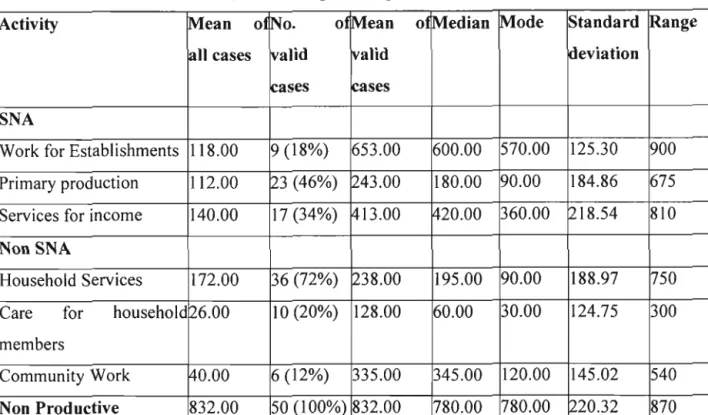
Examining Time Use Patterns in more Detail
The study further revealed the differences in the time spent by women and men on the three activities under SNA activities. For the community work activity, the research shows that women in the sample spend more time on average than men. However, the research also shows that there are differences in the time that women and men spend on non-productive work.
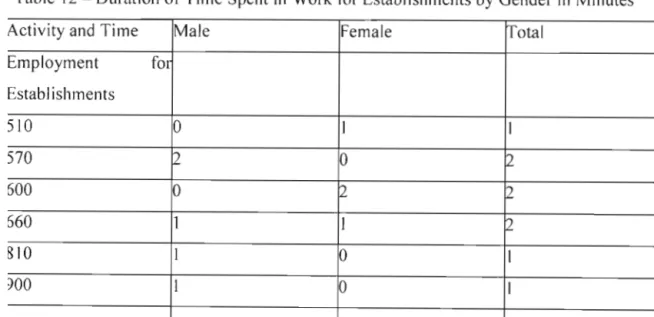
CONCLUSION AND POLICY RECOMMENDATIONS
Conclusion
The study further reveals that men spend more time on unproductive work compared to women. The study further shows that men spend more time than women in the category of working for companies. In addition, the study also reveals that women spend more time than men on community work.
Policy Recommendations
34;Issues in the design of time use surveys for the collection of data on paid and unpaid work". Proceedings of the International Seminar on Time Use Studies, organized by the Central Statistical Organization and UN-ESCAP. 34;Estimating Work Force Using Time Use Statistics in India and its Implications for Employment Policies".
DIARY
